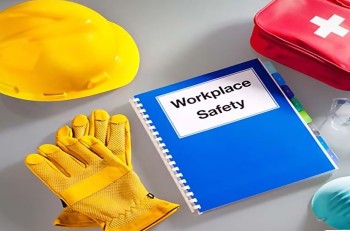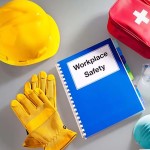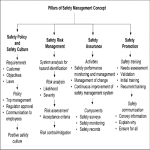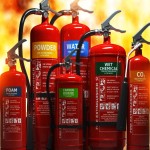Author: Sherifudeen Olasheni Carew
Badagry Port & Free Zone is a new deep-sea facility located in Nigeria, which is expected to be the largest deep seaport in Africa. The port will include a container terminal, oil & gas services, and a liquid bulk terminal, with general cargo and Ro-Ro facilities. (Credit:-https://www.royalhaskoningdhv.com/en/projects/creating-a-masterplan-for-the-badagryport-and-free-zone)
A job safety analysis (JSA) is a process of identifying and evaluating the potential hazards and risks associated with a specific task or activity and determining the appropriate control measures to prevent or minimize them. A JSA can help to improve the safety and health of workers, reduce the likelihood of accidents and injuries, and comply with relevant regulations and standards.
To make a job safety analysis for working at a seaport depot, you can follow these general steps:
1. Define the scope and purpose of the task or activity that involves working at a seaport depot. For example, you may need to load or unload containers, inspect, or maintain equipment, construction, welding, working at height or operate vehicles or cranes.
2. Break down the task or activity into smaller and sequential steps. For each step, describe what needs to be done, how it will be done, and who will do it.
3. Identify the potential hazards and risks associated with each step. Hazards are anything that can cause harm, such as falling objects, slippery surfaces, electrical wires, or weather conditions. Risks are the likelihood and severity of harm that may result from the hazards.
4. Evaluate the level of risk for each step by considering the frequency, duration, and exposure of the workers to the hazards, as well as the existing control measures in place. You can use a risk matrix or a similar tool to rank the risks from low to high.
5. Decide on the additional control measures that are needed to eliminate or reduce the risks to an acceptable level. Control measures are actions or devices that can prevent or minimize the hazards or their consequences. You can use the hierarchy of controls to prioritize the most effective and feasible control measures. The hierarchy of controls consists of:
• Elimination: removing the hazard completely from the work environment
• Substitution: replacing the hazard with a less harmful alternative
• Engineering: designing or modifying the work environment or equipment to isolate or
minimize the hazard
• Administrative: implementing policies, procedures, training, or supervision to reduce the exposure or frequency of the hazard
• Personal protective equipment (PPE): providing workers with appropriate clothing, footwear, gloves, helmets, harnesses, or other devices to protect them from the hazard
6. Document your findings and recommendations in a JSA form or report. Include the following information:
• The name and description of the task or activity
• The date and location of the JSA
• The name and role of the person who conducted the JSA
• The name and role of the workers who participated in or reviewed the JSA
• The steps involved in the task or activity
• The potential hazards and risks for each step
• The existing and additional control measures for each step
• The level of risk before and after applying the control measures
Any other relevant information or comments
• Implement your recommendations and communicate them to all workers who are involved in or affected by the task or activity. Provide them with adequate training, instruction, supervision, and feedback on how to perform the task or activity safely and effectively.
• Review and update your JSA regularly or whenever there are changes in the work environment, equipment, personnel, or procedures that may affect the safety and health of workers.







